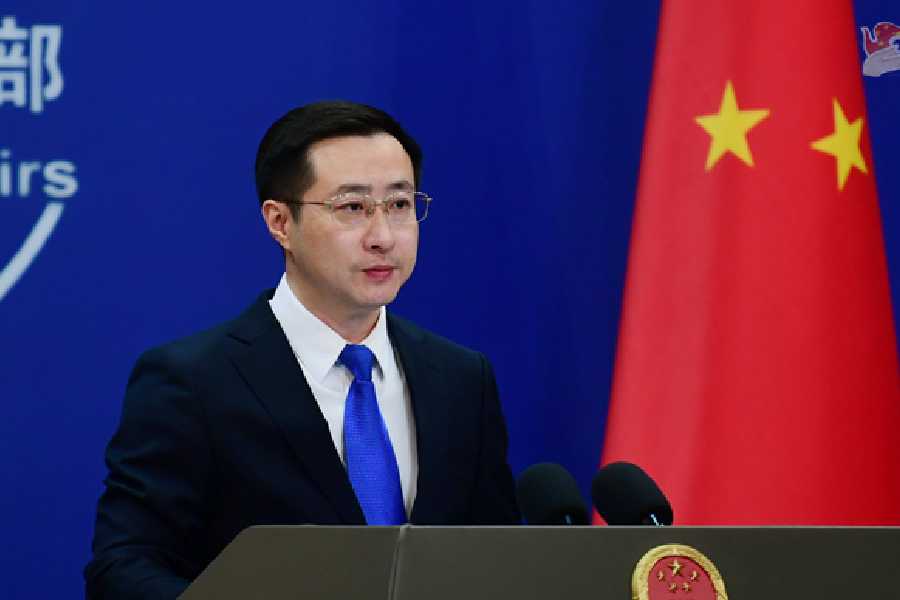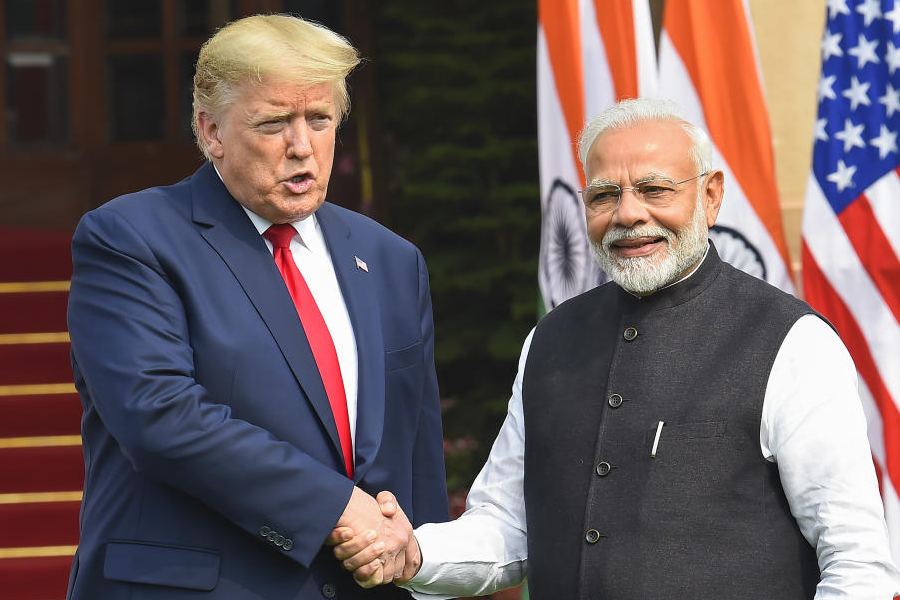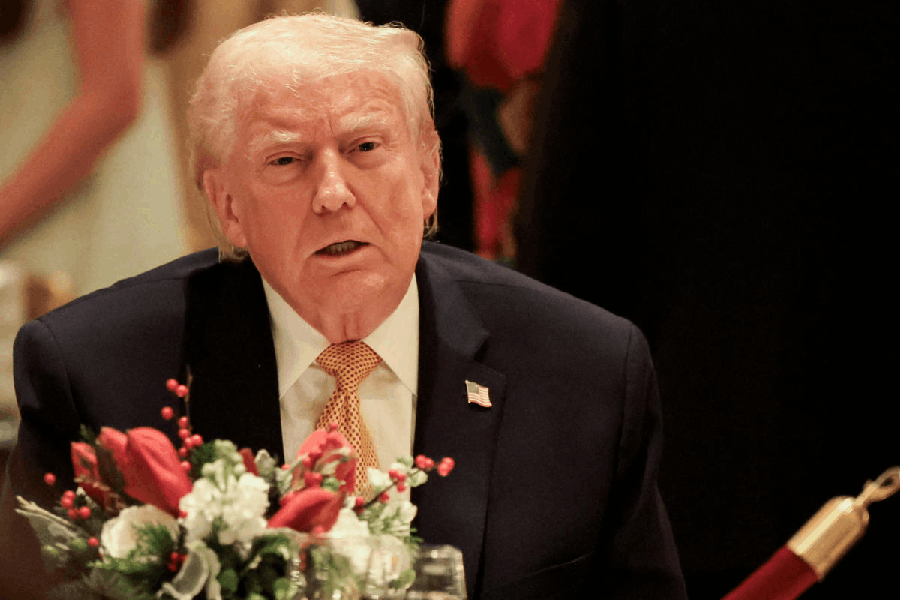Bears ruled Dalal Street on Black Monday as sell-off pressure in the markets, spooked by the prospect of a trade war and a recession because of Donald Trump’s tariff assault on trading partners, eroded investors’ wealth by over ₹13 lakh crore.
There are fears of a further downslide for Indian equities.
The bloodbath in the Indian markets — the Sensex tanking by 2.95 per cent and the Nifty settling 3.24 per cent down — was, however, moderate in comparison with some Asian peers.
In Hong Kong, the benchmark Hang Senh plunged 13 per cent, the worst since 1997. Japan witnessed a 7.83 per cent decline in the benchmark Nikkei.
Bloomberg reported that the MSCI Asia Pacific Index — which captures large and mid-cap stocks across developed markets like Australia, Japan and Hong Kong and eight emerging market countries like India, China and Indonesia in the Asia Pacific region —fell as much as 8.5 per cent, the worst since the global financial crisis of 2008.
Bad news flew in from all corners, with European shares crashing to a 16-month low and oil prices plummeting amid fears that Trump’s tariff announcements could lead to higher prices, weaker demand and, potentially, a global recession.
Most analysts, however, said India’s macro fundamentals remained intact and predicted a minimal impact from Trump’s tariffs since the country’s manufacturing export has been less than 2 per cent of the GDP.
Still, the bearish mood in the markets did affect millions across the country. While the Indian equities market has traditionally been relatively narrow — investing in stocks was primarily a trait of the well-heeled — the last few years have seen a sudden influx of a new generation of investors, taking the number of trading accounts to 110 million.
With the Trump administration showing no sign of backing away from its tariff plans — “sometimes you have to take medicine to fix something,” the US President said on Sunday — the uncertainties are unlikely to go away soon.
“Today’s fall is driven by macro and geopolitical risk, led by tariffs slapped by the US government,” Vinit Bolinjkar, head of research at Ventura, said.
Bolinjkar added: “The proposed tariffs are likely to trigger a consumption shock in the US, leading to a global supply glut and slowdown in major commodities. Indian equities may experience near-term volatility driven by global risk-off sentiment.”
The report card from the markets showed that the sell-off did not spare any sector — almost all the sectoral indices were affected. Tata Steel emerged as the biggest loser, with the list of the worst-hit stocks including L&T, Tata Motors, Kotak Mahindra Bank, Infosys and ICICI Bank.
The rupee was one of the worst-performing Asian currencies on the day, logging its steepest single-day decline in around 26 months, erasing all the gains of 2025.
The rupee depreciated by 0.6 per cent — its worst fall since February 6, 2023 — to settle at 85.84 per dollar against the previous close of 85.24 per dollar. Yet, many analysts held out hope for India.
“Robust domestic demand and ongoing trade realignment continue to position India favourably for the long term. We anticipate a healthy recovery following the initial market correction,” Bolinjkar said.
Rajesh Bhosale, technical analyst, Angel One Ltd, too said that Monday’s decline was largely influenced by significant weaknesses in the global markets.
“However, any signs of stabilisation or improvement on the global front are likely to ignite a powerful recovery in the Indian markets,” he said.
Similar messages predicting a reduced impact on India poured in from various quarters. However, at a time when the economy’s growth momentum looks dodgy, weakened further by the tariff-induced uncertainties, the volatility in the equities market caused jitters among market participants.
“There is a major risk because of excessive financialisation, where more and more people are opening demat accounts without proper financial literacy,” Pinaki Chakraborty, visiting distinguished professor, the National Institute of Public Finance and Policy, said.
“Because of financialisation, people are moving from safe savings to risky investment, which has the potential to be a major problem for financial stability,” he added.
“It may not be as alarming as in many other countries, but it is indeed a cause for concern,” Chakrabortywent on, adding that the regulators have a role in making people aware of the risks involved in entering the equities market.
While achieving a balanced approach to the financialisation of the economy — a concern raised in the Economic Survey for 2024-25 — and providing safe savings opportunities to households may take some time, the clamour for immediate government intervention to reduce the impact of trade-war-induced uncertainties has been growing.











